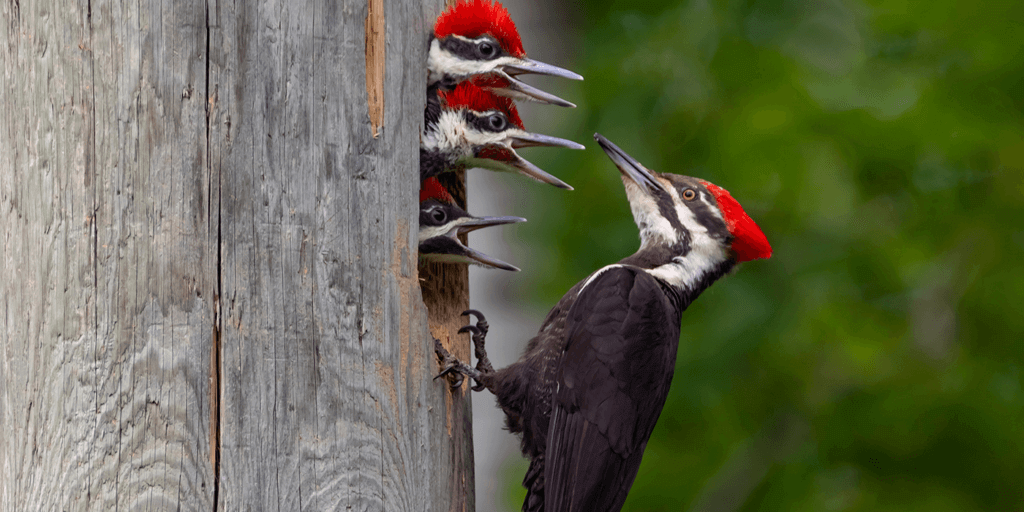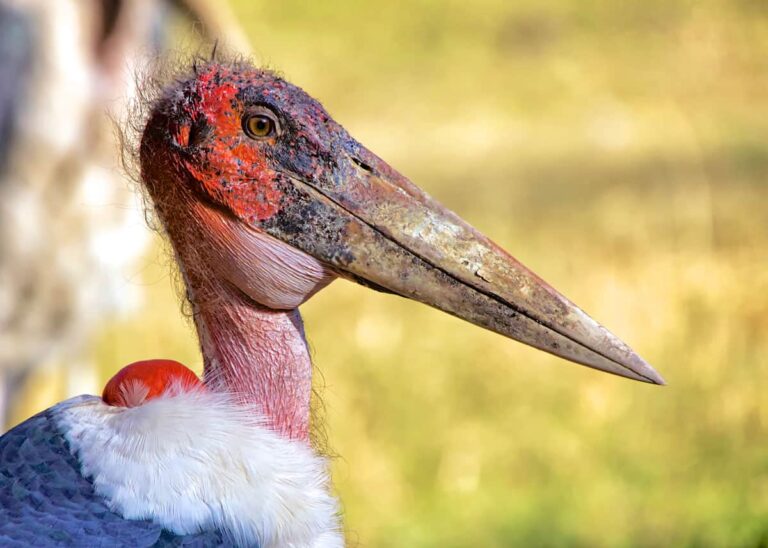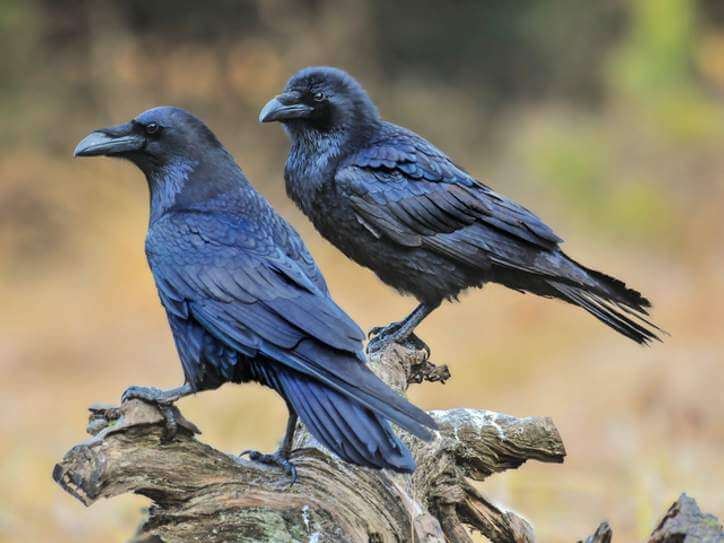Woodpecker – Nature’s Carpenter
The woodpecker is an intriguing bird known for its unique habit of pecking on trees. As “Nature’s Carpenter,” the woodpecker plays a vital role in forest ecosystems. This article explores the fascinating aspects of woodpeckers, from their scientific classification to their physical characteristics, behavior, and human interaction.
Contents
Scientific Classification
- Kingdom: Animalia
- Phylum: Chordata
- Class: Aves
- Order: Piciformes
- Family: Picidae
- Genera: Picus, Dryocopus, Melanerpes, and others
- Species: Over 240 species, including the Downy Woodpecker (Picoides pubescens), Pileated Woodpecker (Dryocopus pileatus), and Great Spotted Woodpecker (Dendrocopos major).
Physical Characteristics

Woodpeckers are medium-sized birds with specialized physical features that help them thrive in their environment:
- Beak: Strong, chisel-like, allowing them to drill into wood to find insects or create nesting cavities.
- Head and Neck Muscles: Extremely powerful, enabling repetitive, high-impact pecking without injury.
- Tail: Stiff tail feathers provide stability when climbing and hammering trees.
- Feet: Zygodactyl feet (two toes facing forward and two backwards) for excellent grip on tree trunks.
- Tongue: Long and sticky, with barbed tips to extract insects from deep crevices.
- Coloration: Varies across species but often includes black, white, red, and yellow markings, providing camouflage in wooded areas.
Habitat
Woodpeckers are found on almost every continent except Australia and Antarctica. They predominantly live in:
- Forests: Both deciduous and coniferous, where trees provide food and shelter.
- Woodlands and Parks: Adaptable to human environments, they can also be found in urban parks and gardens with sufficient trees.
- Deserts and Scrublands: Some species, such as the Gila Woodpecker, thrive in desert habitats, utilizing cacti for nesting.
Behavior
Woodpeckers exhibit fascinating behaviors that have captivated birdwatchers and researchers alike:
- Drumming: A communication method, woodpeckers drum on tree trunks to establish territory and attract mates. The rapid pecking sound is distinctive and varies in rhythm and speed depending on the species.
- Pecking: Woodpeckers peck on trees to create nesting cavities, find insects, and store food. Their skulls are specially adapted to withstand the impact, absorbing the shock through spongy bone tissue.
- Territoriality: Woodpeckers are highly territorial and will defend their chosen area vigorously from intruders.
Diet
Woodpeckers have a varied diet that includes:
- Insects: The primary food source, particularly wood-boring larvae, ants, and beetles.
- Fruits and Nuts: They consume berries, seeds, and nuts when insects are scarce, especially in the winter months.
- Sap: Some species, like the Yellow-bellied Sapsucker, feed on tree sap by drilling shallow holes in tree bark.
Reproduction
Woodpeckers typically breed once a year:
- Nesting: Both males and females work together to excavate a nest in dead or decaying trees. The cavity protects from predators and harsh weather.
- Eggs: Females lay 3 to 6 eggs, which both parents incubate for about two weeks.
- Chicks: After hatching, they remain in the nest for up to a month, fed by both parents until ready to fledge.
Predators
While woodpeckers have few natural predators due to their tree-dwelling habits, they do face threats from:
- Birds of Prey: Hawks, owls, and falcons may target woodpeckers, particularly young or inexperienced individuals.
- Snakes and Mammals: Tree-dwelling predators such as snakes, squirrels, and raccoons can invade nests and prey on eggs or chicks.
- Humans: Habitat loss due to deforestation and urbanization poses a significant threat to woodpecker populations.
Conservation Status
The conservation status of woodpeckers varies by species:
- Least Concern: Many species, like the Downy Woodpecker, are abundant and face no immediate threat of extinction.
- Threatened/Endangered: Some species, such as the Ivory-billed Woodpecker, are critically endangered or possibly extinct due to habitat destruction and logging.
- Conservation Efforts: Organizations and governments work to protect woodpecker habitats through reforestation projects, wildlife sanctuaries, and legal protection of forests.
Interesting Facts
- Drumming as a Tool: Woodpeckers can drum up to 20 times per second, making around 12,000 pecks daily.
- Tongue Adaptation: A woodpecker’s tongue is often longer than its beak and can extend up to three times the length of its head to capture prey.
- Acorn Woodpecker: This species stores acorns in small holes drilled into trees, creating large “granaries” that can hold thousands of nuts.
Evolutionary History
Woodpeckers are believed to have evolved approximately 25 million years ago during the Oligocene epoch. Fossils indicate that their ancestors lived in forested areas and developed specialized features, such as reinforced skulls and strong beaks, to adapt to a diet of tree-dwelling insects. Over time, different species evolved to inhabit various niches, from temperate forests to deserts.
Relationship with Humans
Woodpeckers are often regarded with fascination by birdwatchers, but they can also cause issues in human environments:
- Positive Relationship: Many appreciate woodpeckers’ role in controlling insect populations, especially in agricultural and forested areas.
- Human Conflict: Occasionally, woodpeckers damage buildings or wooden structures by pecking on them in search of insects or to create nesting sites. This has led to the development of deterrents to protect property.
Conclusion
Woodpeckers are extraordinary birds that exemplify the intricate balance of nature. Their physical adaptations, from powerful beaks to shock-absorbent skulls, make them one of the most specialized species of birds. As “Nature’s Carpenter,” they contribute to the health of forest ecosystems by controlling insect populations, creating homes for other species, and maintaining the natural balance. While many woodpecker species thrive, ongoing conservation efforts are essential to ensure that endangered species are protected and future generations can continue to enjoy these fascinating birds.
- Are Rottweilers Good With Kids? Reasons & Training Tips - 17 September 2025
- How Long Are Dogs Pregnant: Complete Guide - 16 September 2025
- German Shepherd Doberman Mix: Info, Pictures, Care & More - 11 September 2025







